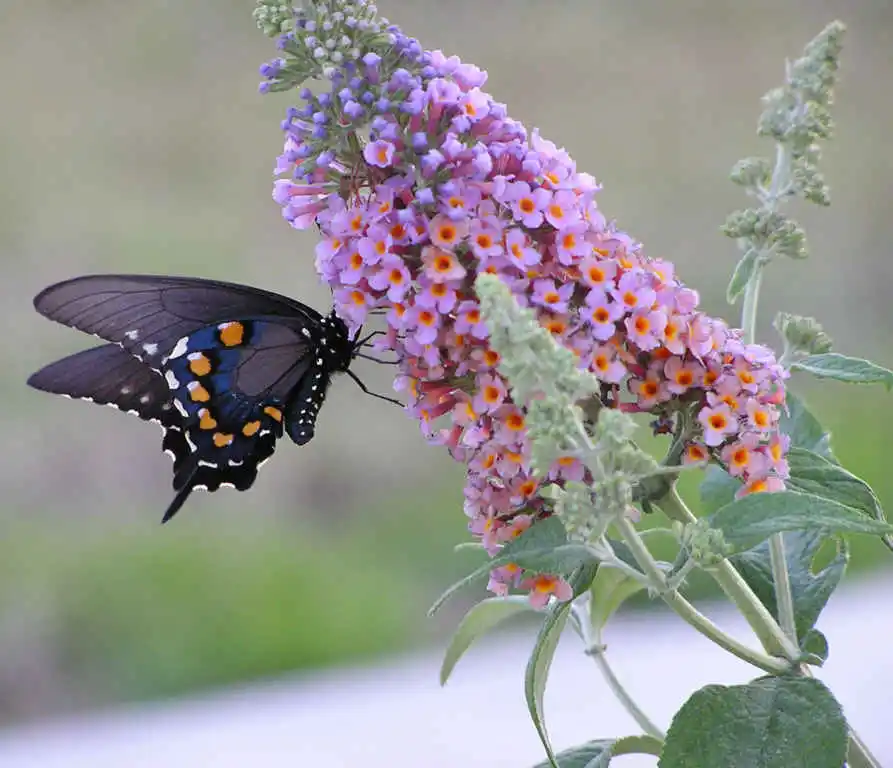Creating a vibrant, lively garden filled with the enchanting flutter of butterflies and the mesmerizing hover of hummingbirds is a dream for many garden enthusiasts. One plant, in particular, stands out as a magnet for these beautiful creatures: the Butterfly Bush, scientifically known as Buddleja davidii.
This article delves into why the Butterfly Bush is the perfect addition to your garden to attract hummingbirds and butterflies, exploring its characteristics, care requirements, and ecological benefits.
The Butterfly Bush: An Overview

The Butterfly Bush is a deciduous shrub that belongs to the Scrophulariaceae family. Native to China, this plant has gained popularity worldwide due to its stunning blooms and ability to attract pollinators. It can grow up to 10 feet tall and 5 feet wide, depending on the variety, making it a substantial addition to any garden.
Characteristics

- Blooms: The Butterfly Bush is renowned for its long, cone-shaped flower clusters that can grow up to 12 inches in length. These blooms come in various colors, including purple, pink, white, yellow, and red, providing a vibrant palette that appeals to both humans and pollinators.
- Leaves: The leaves are lance-shaped, often with a slightly serrated edge. They are typically dark green on the top and lighter on the underside, providing a lush backdrop for the bright flowers.
- Fragrance: One of the most captivating features of the Butterfly Bush is its sweet, honey-like fragrance, which is irresistible to butterflies and hummingbirds.
Attracting Hummingbirds and Butterflies

Nectar Source
The primary reason the Butterfly Bush is so effective at attracting hummingbirds and butterflies is its abundant nectar. Both of these creatures rely on nectar as a key food source, and the Butterfly Bush produces it in copious amounts. The tubular shape of the flowers is particularly well-suited for hummingbirds, whose long beaks can easily access the nectar.
Color Attraction
Hummingbirds and butterflies are highly attracted to bright colors. The Butterfly Bush’s vibrant blooms, especially in shades of purple, pink, and red, are highly visible and appealing to these pollinators. Hummingbirds, in particular, have a preference for red and pink flowers, making certain varieties of the Butterfly Bush especially effective at drawing them in.
Continuous Blooms
One of the standout features of the Butterfly Bush is its long blooming period. It typically flowers from late spring through the first frost, providing a continuous source of nectar throughout the growing season. This extended blooming period ensures that your garden remains a haven for hummingbirds and butterflies for months on end.
Planting and Caring for Butterfly Bush
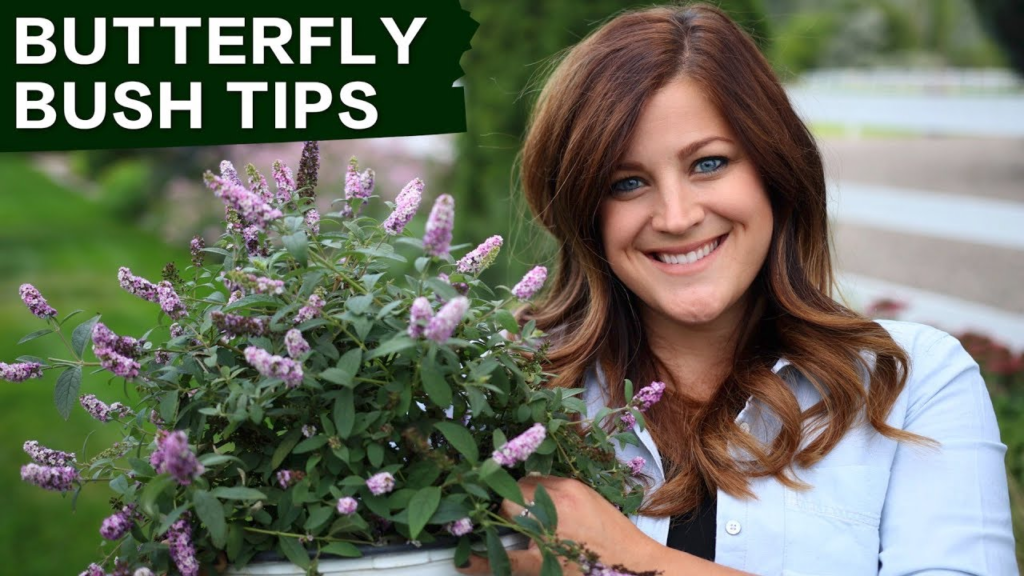
To maximize the Butterfly Bush’s potential to attract hummingbirds and butterflies, proper planting and care are essential. Here are some key considerations:
Planting
- Location: Choose a sunny spot for your Butterfly Bush. These plants thrive in full sun, which promotes robust growth and abundant flowering.
- Soil: Butterfly Bushes are not particularly fussy about soil type, but they do best in well-draining soil. If your garden has heavy clay soil, consider amending it with compost or sand to improve drainage.
- Spacing: Ensure adequate spacing between plants to allow for proper air circulation, which helps prevent fungal diseases. Space plants about 5-10 feet apart, depending on the variety.
Watering
While Butterfly Bushes are relatively drought-tolerant once established, they require regular watering during their first growing season to establish a strong root system. Water deeply and consistently, especially during dry spells. Once established, they can withstand periods of drought but will benefit from occasional deep watering.
Pruning
Pruning is essential for maintaining the health and shape of your Butterfly Bush. Here are some tips:
- Timing: Prune in late winter or early spring before new growth begins. This timing encourages vigorous new growth and abundant flowering.
- Method: Cut back the plant to about 12-24 inches from the ground. This drastic pruning may seem severe, but it promotes strong, healthy growth and prevents the plant from becoming leggy.
- Deadheading: Regularly remove spent blooms throughout the growing season to encourage continuous flowering.
Fertilizing
Butterfly Bushes do not require heavy feeding, but they will benefit from a balanced, slow-release fertilizer applied in early spring. Avoid high-nitrogen fertilizers, which can promote excessive foliage growth at the expense of flowers.
Ecological Benefits
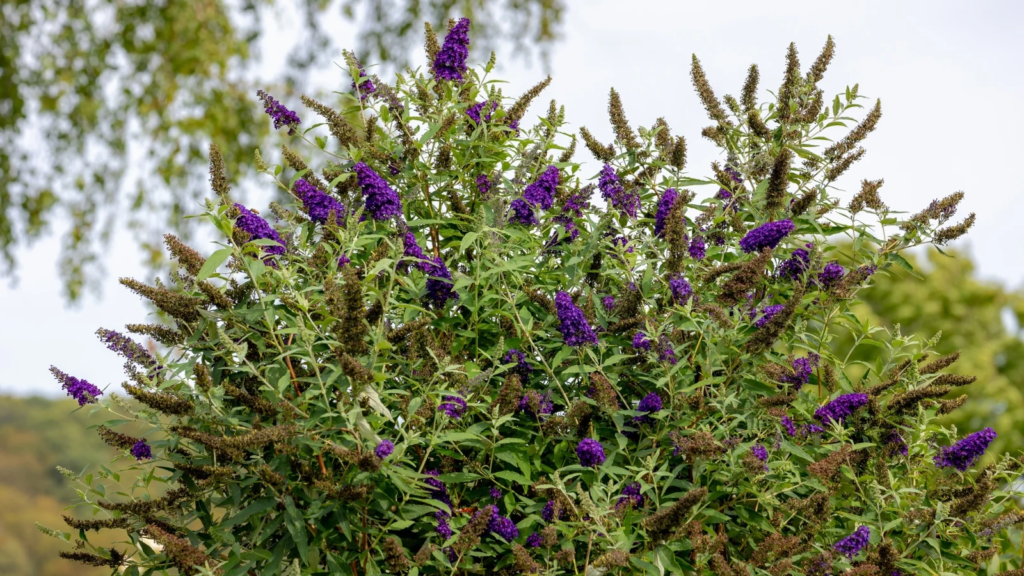
Beyond attracting hummingbirds and butterflies, Butterfly Bushes offer several ecological benefits:
Pollinator Support
By providing a reliable source of nectar, Butterfly Bushes support the health and survival of various pollinators, including bees and butterflies. This, in turn, supports the broader ecosystem by promoting the pollination of other plants.
Habitat Creation
Butterfly Bushes can serve as habitat for various beneficial insects and small wildlife. Their dense foliage provides shelter, while their flowers offer a food source.
Soil Erosion Control
The extensive root system of Butterfly Bushes helps stabilize soil, making them a good choice for areas prone to erosion. Planting them on slopes or in areas with loose soil can help prevent erosion and improve soil structure.
Choosing the Right Variety
There are numerous varieties of Butterfly Bushes to choose from, each with its own unique characteristics. Here are a few popular options:
‘Black Knight’
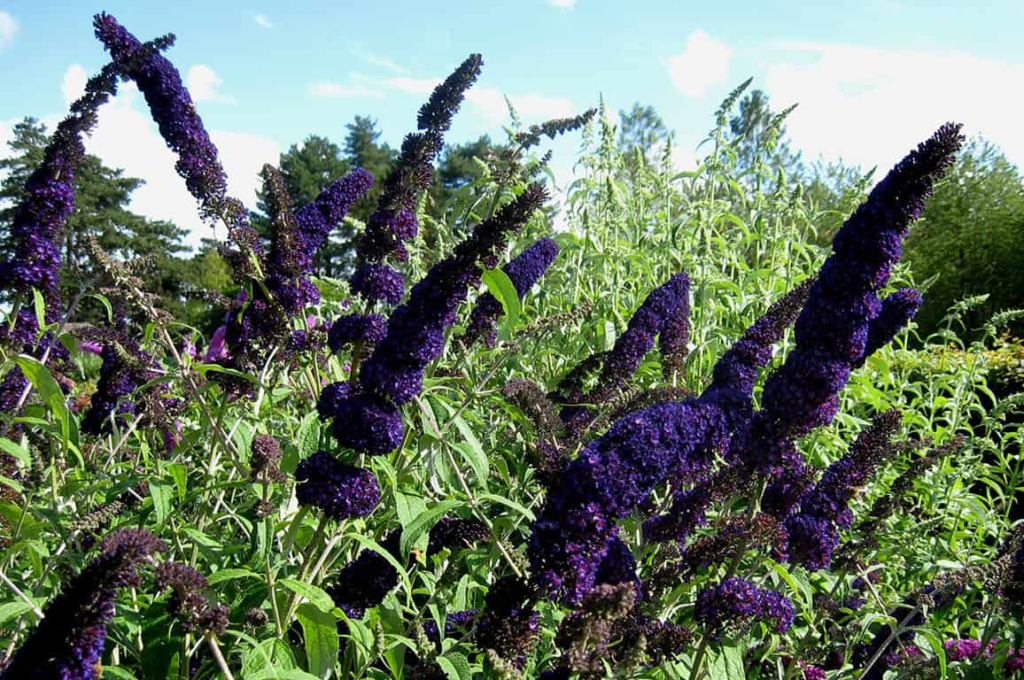
- Description: Known for its deep purple, almost black flowers, ‘Black Knight’ is a striking variety that adds dramatic color to the garden.
- Height: Grows up to 8-10 feet tall.
- Attraction: Its dark blooms are particularly attractive to hummingbirds.
‘Miss Molly’

- Description: This variety features rich, magenta-red flowers that are a magnet for pollinators.
- Height: More compact, growing up to 5-6 feet tall.
- Attraction: The vibrant red flowers are highly attractive to both butterflies and hummingbirds.
‘White Profusion’

- Description: As the name suggests, ‘White Profusion’ produces abundant clusters of pure white flowers.
- Height: Reaches 6-8 feet tall.
- Attraction: Its bright white flowers stand out in the garden and attract a variety of pollinators.
‘Pink Delight’

- Description: This variety features beautiful, bright pink flowers that are very effective at attracting butterflies.
- Height: Grows up to 5-7 feet tall.
- Attraction: The pink blooms are particularly appealing to butterflies and add a cheerful color to the garden.
Companion Planting
To create a garden that is truly a haven for hummingbirds and butterflies, consider companion planting. By combining Butterfly Bushes with other nectar-rich plants, you can enhance the attractiveness of your garden. Here are some excellent companion plants:
Milkweed (Asclepias)

Milkweed is a vital host plant for monarch butterflies. Its bright flowers provide nectar, and it serves as a breeding ground for monarch caterpillars.
Coneflower (Echinacea)

Coneflowers are hardy perennials that produce large, daisy-like flowers. Their long blooming period and vibrant colors make them a favorite among butterflies.
Bee Balm (Monarda)
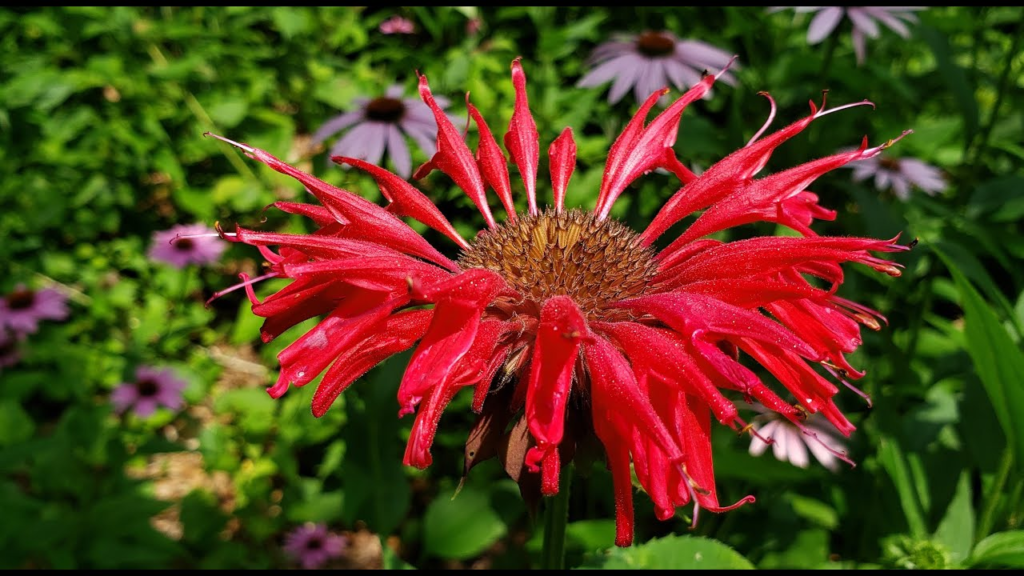
Bee Balm is known for its bright, tubular flowers and aromatic foliage. It attracts hummingbirds, butterflies, and bees, making it an excellent addition to a pollinator garden.
Salvia

Salvias, or sage plants, produce spikes of flowers that are highly attractive to hummingbirds. Their drought tolerance and long blooming period make them a great companion for Butterfly Bushes.
Lantana

Lantana plants produce clusters of small, colorful flowers that butterflies adore. They are heat-tolerant and can thrive in a variety of conditions, making them versatile garden plants.
Garden Design Tips
Incorporating Butterfly Bushes into your garden design can create a visually appealing and wildlife-friendly space. Here are some design tips:
Create Layers
Plant Butterfly Bushes as part of a layered garden design. Use taller varieties as a backdrop, with shorter plants in front. This creates depth and visual interest while providing diverse habitats for pollinators.
Color Coordination
Coordinate the colors of your Butterfly Bushes with other plants in your garden. For a harmonious look, choose plants with complementary colors. For example, pair deep purple Butterfly Bushes with yellow coneflowers or white salvias.
Continuous Blooms
To ensure continuous blooms throughout the growing season, choose a variety of plants with overlapping flowering periods. This will keep your garden vibrant and attractive to pollinators from spring to fall.
Garden Paths
Incorporate paths or walkways through your garden to allow close-up viewing of the Butterfly Bushes and other pollinator plants. This enhances the enjoyment of your garden and allows for easier maintenance.
Common Issues and Solutions
While Butterfly Bushes are generally hardy and low-maintenance, they can occasionally encounter problems. Here are some common issues and solutions:
Pests
- Aphids: These small, sap-sucking insects can be controlled with insecticidal soap or by introducing beneficial insects like ladybugs.
- Spider Mites: These tiny pests can cause leaves to yellow and drop. Increase humidity around the plant and use a miticide if necessary.
Diseases
- Root Rot: Ensure good drainage and avoid overwatering to prevent root rot.
- Powdery Mildew: This fungal disease appears as a white, powdery coating on leaves. Improve air circulation and apply a fungicide if needed.
Poor Flowering
- Insufficient Sunlight: Ensure your Butterfly Bush is planted in a location that receives full sun.
- Improper Pruning: Prune properly in late winter or early spring to encourage vigorous flowering.
Conclusion
The Butterfly Bush is an exceptional addition to any garden, offering both aesthetic beauty and ecological benefits. Its vibrant blooms and sweet nectar attract a variety of pollinators, including hummingbirds and butterflies, creating a lively and enchanting garden space. By choosing the right variety, planting in suitable conditions, and providing proper care, you can enjoy a garden filled with the delightful presence of these winged visitors.
Incorporating Butterfly Bushes into your garden not only enhances its visual appeal but also supports local ecosystems by providing food and habitat for pollinators. Whether you’re a seasoned gardener or a beginner, the Butterfly Bush is a versatile and rewarding plant that brings the magic of nature to your doorstep. So, plant a Butterfly Bush, sit back, and watch as your garden comes alive with the flutter and hum of these beautiful creatures.

